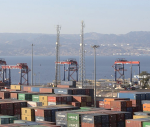You are here
Decision-making during crises
By Dr Tareq Rasheed , Family Flavours - Jul 05,2020 - Last updated at Jul 05,2020

Photo courtesy of Family Flavours magazine
By Dr Tareq Rasheed International Consultant and Trainer
Worries, vague information, an unclear vision and threatened objectives ensue during crises and affect the decision-making process at the individual, organisational and country levels. Are you equipped with the right decision-making tools and strategies?
What is a crisis?
Any obstacle that affects achieving objectives is a problem and in most cases, several solutions can be applied. But when problems are neglected, they turn into risks and risk is an expected threat that may affect future achievements of goals. Risks need control procedures to deal with them. If risks are not controlled, then we end up with a crisis on our hands. Crisis management is then needed to control the crisis. One of the most important managerial procedures is decision making.
The life cycle of decisions
• Decision Making: This step is deciding what decision to make. Here, data, information and knowledge are needed to help reach the right decision. The problem that may affect this step is when the information is incorrect, incomplete or sometimes both, resulting in a wrong decision
• Decision Taking: The person in charge must take this step, which requires courage, speed and precision. Delaying this step in times of crisis will make its impact more critical
• Decision Implementation: Implementation is the key to control and manage the crisis. This step needs competent people who are provided with resources for implementation, such as materials, machines, money, technology and any needed logistics.
Tools for more effective decision making
Consider all factors: To ensure that correct and complete information is available, action needs to be taken to get the information from credible resources and experts. This tool is the most important one as the other tools will be effective once this is applied correctly.
Plus, minus and interesting: Decision-making requires us to ponder three main important issues:
• Plus: What are the advantages of this decision in managing this crisis?
• Minus: What are the possible disadvantages of this decision?
• Interesting: Are there interesting points to be considered in this decision?
If the impact of the advantages and interesting points exceed the disadvantages, the decision should be taken.
Consequences and sequel: Consider the consequences of the decision in the short, intermediate and long terms. Once the consequences on the long-term are positive and sustainable in impact, you can act on the decision.
First important priorities: It’s important to assess the situation in crisis to focus on the situations that have the highest level of priority.
Alternatives, possibilities and choices: Discuss several alternatives to manage the crisis, study the possibilities of success in implementing the different alternatives, then make the best choices, which should satisfy the following criteria:
• Lower strategic cost
• Quick in time of implementation
• Best quality of outputs
• Sustainable impacts
• Availability of resources to implement
• Ease of implementation
Aims, goals and objectives: Aims provide a sense of direction and serve as guiding principles. Aims become goals when they become more specific. Objectives are more precise than goals and are stated in observable and measurable terms.
Others’ point of view: Before taking the final decision, consider the impact of the decision on all those affected by the decision so as not to manage the crisis from one perspective and neglecting the viewpoints of others who are affected.
Once you manage a crisis effectively, then it’s time to review and document for future similar crises.
Reprinted with permission from Family Flavours magazine
Related Articles
How do we decide between two or more options that appear equally attractive at first glance?
AMMAN — The government is set to launch a unified digital platform to serve as a hub for electronic participation and interaction betw
When social media content is used as a measuring stick to which youth compare themselves, this creates self-esteem issues. Secondly, the information is often misleading or inaccurate, which impacts their decision-making and their views of the world.

















